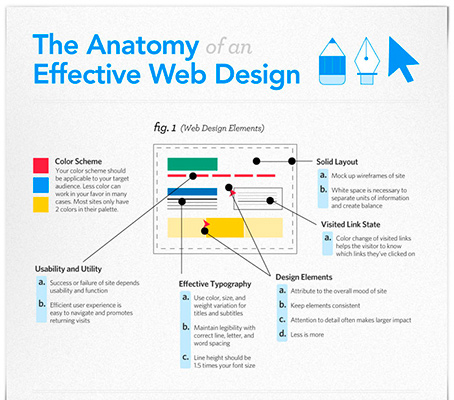Basic Facets Of Website Design: Standards For Creating A User-Centric Site
Basic Facets Of Website Design: Standards For Creating A User-Centric Site
Blog Article
Created By-Hovmand Devine
When it concerns website design, making sure user-friendliness is essential. From responsive style to structured navigating, every component plays an essential role in producing a site that deals with your target market's needs. However what regarding the better information that can make or break a customer's surfing experience? Stay tuned as https://www.entrepreneur.com/article/394911 uncover some often-overlooked tips that can elevate your website's usability to the following degree, making it absolutely stick out in the electronic landscape.
Significance of Responsive Layout
Responsive design is a critical element of modern website development. Ensuring your site is responsive ways that it can adjust to various display dimensions and gadgets, giving a smooth experience for users.
With the enhancing use mobile phones and tablets to access the internet, having a receptive style is crucial for getting to a broader target market. It helps in boosting customer experience by making your site very easy to navigate and read on any gadget.
In addition, receptive design can favorably influence your search engine rankings, as search engines like Google prioritize mobile-friendly sites. By having a responsive style, you're likewise future-proofing your web site, as new tools with differing screen sizes continue to emerge.
Simplify Navigation Structure
To boost user experience and promote simple access to information on your website, enhancing the navigating structure is vital. When creating your website, focus on developing a clear and intuitive navigating food selection that assists site visitors locate what they're trying to find rapidly.
Restriction the variety of food selection products to the fundamentals, organizing associated web pages with each other to prevent frustrating individuals. Use descriptive labels that clearly show the content of each web page, making it much easier for individuals to understand where each web link will take them.
Think about carrying out dropdown food selections for subcategories to stop jumbling the primary navigation bar. Additionally, include just click the following web site on the page for users that choose looking for specific details.
Prioritize mobile responsiveness in your navigating layout to guarantee easy gain access to on all devices.
Maximize Page Tons Speed
Improving web page load speed is critical for keeping visitors on your web site. Slow-loading web pages annoy customers and can cause high bounce rates. To enhance page tons rate, start by optimizing pictures. Compress photos without compromising quality to minimize their data sizes.
Furthermore, enable internet browser caching to store often accessed resources locally, quickening tons times for returning site visitors. Minify CSS, JavaScript, and HTML documents by getting rid of unneeded personalities, remarks, and format, improving lots rate.
Take into consideration making use of a web content shipment network (CDN) to distribute your internet site's material across numerous servers worldwide, reducing latency for users accessing your website from different places. Lastly, restrict the use of third-party scripts and plugins, as they can considerably impact load times.
Conclusion
To conclude, by including receptive design, streamlining navigation, and enhancing page load rate, you can create a straightforward web site that appeals to a larger audience and improves user experience. These essential elements make certain that visitors can easily gain access to and browse your website across different devices, bring about enhanced engagement and complete satisfaction. By focusing on these essential facets, you can build a successful site that maintains individuals coming back for even more.
